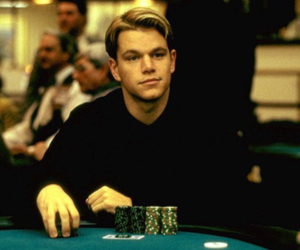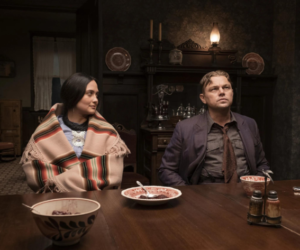There are some situations and backdrops that filmmakers return to time and again to build their plot and narrative.
How many times in a film have two adversaries sat across from each other in a diner, building tension in the most normal of situations? In 1995, Michael Mann put two of the best actors on the planet, Robert De Niro and Al Pacino, across a table in a diner chewing the fat in cops and robbers’ classic Heat. It brought the two legends together in an everyday situation in a film that was anything but routine.
Sometimes, a director might use a sports game to set a scene. Good Will Hunting, with Matt Damon, Ben Affleck and Robin Williams, won two Oscars and was nominated for nine and features a great scene based on a Red Sox game which used sports as a vehicle for character progression.
Poker is another great way to build tension, move characters along or add to the plot, and it’s been used to great effect in many films over the years. Some films, such as the western thriller Five Card Draw, use poker as a central premise, which is all well and good, but how do we see poker used purely as a mechanism within a wider film. Also, why does it work so well?
Firstly, it’s important to understand that poker is a complex game, and like a film script, it has many layers and a lot happening at any given moment. However, it is also very popular, and unlike some obscure card games, it’s likely people will understand what is happening. This is exemplified in the two Casino Royale films, from 1967 and 2006. In the Donald Niven original, a scene in which James Bond plays cards against Le Chiffre features baccarat, which remains true to the book. In 2006, that was swapped for poker. Why?
The variant in question didn’t become popular in the US until the seventies, so in 1967 few people knew how to deal Texas Hold’em. That would mean the intended tension created by the game would be lost because viewers wouldn’t understand what was happening on screen. In 2006, the poker boom was in full swing, and the game’s popularity had never been greater, meaning people could understand what was happening. That allowed director Martin Campbell to create a narrative with cards, not dialogue, and have many understand the events clearly.
That is an example of poker moving a plot on, but a couple of years earlier, we had a great example of poker being used to develop characters. In Ocean’s XI, Danny Ocean, played by George Clooney, hunts out Rusty (Brad Pitt) for a heist they wish to commit. He finds his friend scamming a group of celebrities around a poker table, and he joins in the scam without prompting. The message here is clear; Rusty and Ocean are partners who work well together, scamming others. For a heist movie, it was an important statement to make.
What specifically is it about poker that suits movie plots? There’s tension to the game, and almost all movies have to have tension to keep a viewer interested. Poker is also intense, with unexpected twists, and certainly in thrillers, that’s perfect for helping develop a plot. All moviegoers love an unexpected twist, even if it works against the protagonist, as it did in Lock, Stock and Two Smoking Barrels.
Finally, poker allows for a big comeback. We see this in Rounders, which is a poker-themed film, but it’s a great example to finish with. Matt Damon’s character, Mike McDermott, is cleaned out early in the film, failing to beat Teddy KGB (John Malkovich). It’s an early scene in which he loses his entire bankroll, but at the end of the film (spoiler alert), he bounces back with a big win. Poker, and the viewers’ understanding of poker, makes that final scene as gripping as any shoot-out, standoff or meeting in a café between Hollywood legends.
That’s why poker keeps finding its way into films; it’s versatile to be used in a range of applications.
















